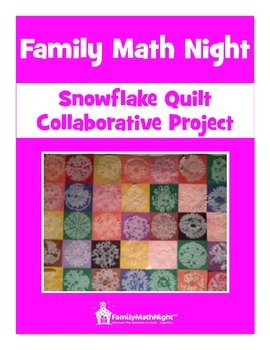FAMILY MATH NIGHT: Snowflake Quilt Collaborative Project
- PDF
What educators are saying
Description
Get kids excited about math and science with this fun hands-on collaborative project. Typically done during a Family Math Night event, this project can also be done in the classroom. The best part is, each person is individually represented in the final product!
Participants will use round coffee filters to design a snowflake that will be used to create a snowflake quilt. They will learn about the attributes of hexagons and different lines of symmetry. They'll also learn how snowflakes are created in nature.
Included in the lesson plan
• list of materials needed
• mathematical background
• scientific background of snowflakes
• mathematical and scientific vocabulary
• table tent with step-by-step directions
• extension activities for older students
• link to the video version of the lesson
More great FAMILY MATH NIGHT and STEAM Collaborative Projects
If you're interested in other ideas for your Family Math Night events, I have a lot of them! Check out my blog, pinterest page, website or YouTube Channel. And if you have questions, let me know!
Family Math Night YouTube Channel
Wishing you a successful Family Math Night event!
Karyn
karyn@FamilyMathNight.com





